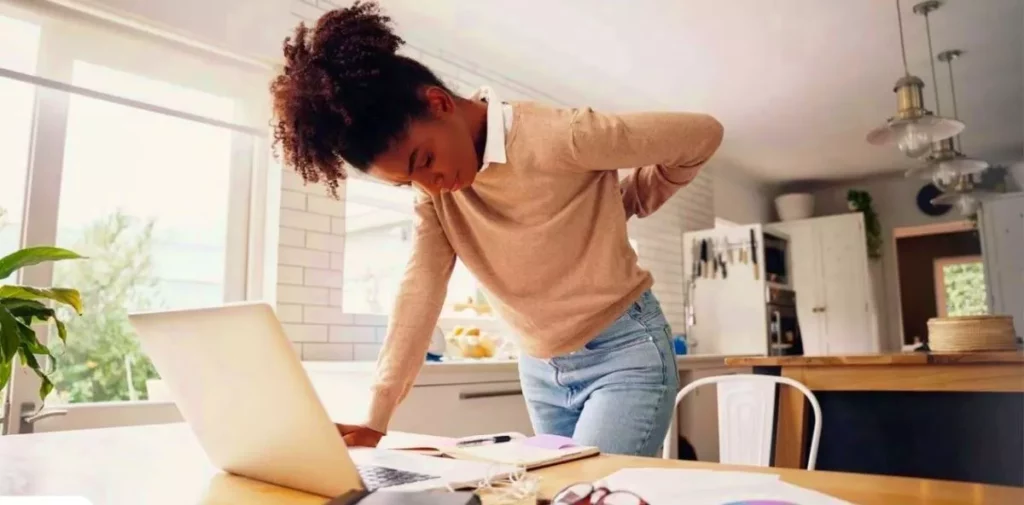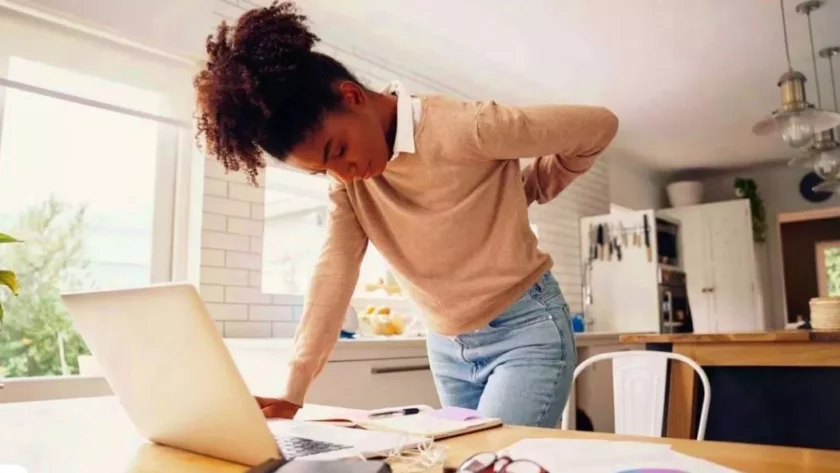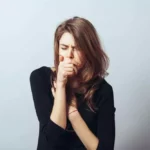OVER VIEW
Contents
Back pain is the most common medical issue, which affects millions of people, especially teenager, who spends most of their time sitting, whether it’s at a job or something else.
Even, In school children’s back pain is also seen, due to stuck on mobile all the time, and it was seen a lot in covid where all worked from home.
There are some habits, that increase the risk of back pain, causing more chances to get back injury, slipped disc, etc.
Its treatment can do at home such as exercises, and certain prescribed medicines, if it is mild, and surgery may be needed if this becomes worse.

Reason for Back Pain
Lower back pain is most commonly seen in most people around the world, followed by upper pain, and middle (which is seen in some cases).
It is becoming more common among young people in recent years. there can be two reasons for this – specific and non-specific.
- Specific – This includes injury in the back, infection, slipped disc, or any disease.
- Non-specific – Muscle weakness, or hamstring strain.
There are multiple reasons for lower, upper, and middle back pain, such as:
Injury On Back
Any type of injury that affects your lower back causes back pain, which can injure or damaged ligaments, tendons, damaged disks.
Strains (overstretch), sprains (tears in muscles), and spasms (contraction in muscles) can also cause lower back pain.
Certain Health conditions
There are many health conditions, which may result in this.
- Nerve and spinal cord issues
- Kidney stones – It can be as painful as pinching a pin, usually on one side
- Pregnancy – During pregnancy, it is common, for the pressure that is put on the stomach, can trigger the pelvis and backbone.
- Infections – An infection can affect the nerve, such as bladder, kidney infection, and pelvic inflammatory disease, which may lead to pain.
- Tumours – That destroy the spine, and nerves.
- Other infections – Pelvic inflammatory disease, and bladder, or kidney infections may also lead to back pain.
- Herniated discs
- Arthritis – In this situation, bone density and strength decrease, which promotes more chances to fracture, and back pain.
- Endometriosis – The buildup of tissue at the side outside the uterus.
- Spinal nerve inflammation or injury
- Sciatica – In this, the sciatic nerve travels through the spine to your buttock and down the back of your leg, causing pain in the affected areas.
- Obesity
There are many other conditions, that can trigger your nerve, muscles, or side muscles, tissues that possibly affect pain.
Posture and Movement
In today’s time sitting posture, and sleeping, standing, or walking movement, can major affect your upper, lower and middle back, causing pain.
Some activities or posture can lead to back pain. which include:
- Long time sitting is the main reason for back in young people
- overstretching
- wrong stretch or bending
- standing for a long time
- lean working or driving for long periods without a break, can causes upper, and lower back pain
- sleeping in the wrong way
- lifting overweight can cause it, which can enhance the risk of slipped disc.
- sneezing or coughing (can put pressure on the back muscles and cause a spasm of pain).
- carrying or pushing something for a long time, can affect back.
Early Signs Of Back Pain
The main symptom of back pain is an ache on a specific spot which can spread the pain all over the back.
Sometimes pain can travel through a nerve to the other area of the body, such as the buttocks, legs, stomach, and toes finger.
Here are common symptoms which include:
- Increasing pain during lifting, bending
- Pain that comes and goes
- Long time sitting
- Worse pain, when sitting, standing, running
- Pain to even stand for a while
Some serious symptoms are:
- loss of urine control
- Pain during sneezing or coughing
- Weakness in arms and legs
- Stiffness when getting up, which is more visible in the cold season.
Upper and middle back pain common symptoms such as:
- A sharp pain, or mild, while sitting
- Muscle tightness or stiffness
Who Is At More Risk of Back Pain?
It can affect most people, but some people are more chances of getting paid, which can increase day by day. which include:
Overweight people – Due to their own weight increases pressure on the spinal cord, lead to lower back pain, and also increases the risk of diseases.
Sitting job person – In today’s time, many people have a sitting job, which puts pressure on the discs, leads to back pain, and can get worse with prolonged sitting.
Aged – After the age of 30, the density of bones starts decreasing, which increases the risk of arthritis, fracture, and back pain.
Genes – Studies have shown that back pain can run in families.
Diseases – Arthritis is the most common disease, that causes lower back pain, which leads to swelling, stiffness, and pain in joints.
Lack of exercise – Pain is common in those people, who are not physically fit. Exercise makes us strong, and increases muscle mass, and stamina.
Smokers – It can block proper blood flow and oxygen supply to the discs, which developed lumbar disc, osteoporosis, lung diseases, etc.
Smokers are more at risk of chronic back pain after an injury, and bones take time to heal.
Other conditions or situations that may also increase the risk of back pain are:
- Pregnant women
- loaded backpacks in children, can strain the back and cause muscle fatigue
- Older people
- poor diet or lack of nutrition
- stress and depression also influence muscle tension and cause it
Learn Out – Is Music Can Treat Mental and Physical illness?
Covid and Back Pain
Many covid positive people felt lower back pain.
It is believed that body pain is primarily caused by your immune system’s response to the COVID infection
But according to the covid experts back pain is one of the most common symptoms of Covid-19.
Dr Arora says, that Covid infection promotes a hormone called cytokines (which are pro-inflammatory in nature).
Cytokines lead to the formation of prostaglandin (E2), which activates all the pain sensors in the body.
How To Diagnose Back Pain
A doctor usually, asks about your symptoms, where they started, medical history like injury, or an underlying medical condition that can lead to back pain.
If no medical condition is caused by this, then the doctor may perform some imaging test or scan. which include:
- CT scan – These scans generate the bone, muscle, and tissues, nerves, vessels, structure, then they can reveal the bone pain.
- MRI – It is usually used to confirm a herniated disc diagnosis. It is used to locate exactly the point on the spine that is affected.
- X-ray – It outlines the broken bone and arthritis, but this alone can not show problems.
Some other tests that may perform by a doctor include:
- Bone tests – It is a nuclear imaging test that tracks several types of bone diseases such as tumors, and fractures. it might be used in severe cases.
- Electromyography: It sends electrical activity in a muscle, which can detect muscle weakness, with the nerves that control the muscles.
- Blood tests – This can evaluate any infection, inflammation, cancer, arthritis, or any other diseases.
- Discography: In this, an injection is inserted into your pain area, which helps to show the damaged areas on CT scans taken following the injection.
- Myelography – In this, dye is injected into the spinal canal. which specific tissues, blood vessels, etc show up more clearly on an x-ray.
Treatment of Back Pain

Its treatment can go away by doing some exercises, but in severe cases, the doctor will tell the treatment after seeing your conditions.
A doctor may suggest this treatment. which include:
Medicines
- Pain relief reduces the pain that causes by nerve, muscle or weak muscles, but doesn’t overuse.
- Aspirin
- Creams, or sprays by applying it to the skin, involve providing a feeling of hot or cold to the nerves and stimulating them.
- Anti-inflammatory drugs, work to reduce inflammation.
Physical therapy
In this, applying ultrasound, and electrical ways can stimulate the muscles to reduce their tension and relieve pain.
Once muscle pain is reduced, then the can therapist starts some ways, which can:
- Strengthen back muscles
- improve mobility
- flexibility, and also help in improving body posture
After the pain is gone, some advice is also given by the therapist to prevent the back pain from coming back.
Bed rest may need if the pain is increased.
NOTE: The doctor may suggest you belt (which tie around the waist, which acts as a support) if you have faced more pain while sitting or walking,
Heat and cold therapy, can ease pain, reduce swelling, and improve mobility
Exercises
Get enhanced in physical exercise to help strengthen the muscles that support the back, which can improve mobility, posture, and positioning.
Strong muscle decrease the risk of back pain, talk to your therapist before starting any physical exercise.
Yoga is also one of the best ways to treat it, which I have experienced myself.
Some yoga asanas which you should try in back pain are:
- Cobra asanas – It is one of the best yoga for back pain relief, done 8 to 10 times.
- Setu bandhasana – In this, lift your hip upwards, and support your back, because your back is still weak. stay in this position for 30 seconds and gradually increase.
- Cow position
- Bhadra asana – if your back is hurting, then better to perform it lying down perform.
- Pawanmuktasana – These are very good hip-opening asana, which improve flexibility in your lower back.
- Dhanurasana – It is recommended by all of you for the lower back.
Some other techniques, that you should get done by a professional.
- Breathing exercises
- Massage can provide substantial healing and pain relief for many lower back problems (2)
- Relaxation techniques
- Acupuncture
- Chiropractic care
Surgery
If your condition or symptoms are more severe then the doctor may also advise you for surgery.
surgery is rarely used for upper and middle back pain.
However, it also has some side effects.
7. Prevention Tips
- Avoid lifting heavy weights
- Do exercise daily, at least 1 hour
- avoid a long time sitting, if not possible, take a rest after 30 to 40 minutes.
- maintain a healthy weight with a properly nutritious diet with a sufficient daily intake of calcium, phosphorus, and vitamin D to promote new bone growth.
- wear comfortable footwear
- and eat a healthy diet including – calcium and vitamin D-rich foods.
- always sleep on a firm surface, and sleep on the left side or on one side
- quit smoking, which increases the risk of osteoporosis and impedes healing.
BOTTOM LINE
Its weight increases pressure on the spinal cord leads to lower back pain, and also increases the risk of diseases.
It is becoming more common among young people in recent years, due to sitting posture, and some habits.



